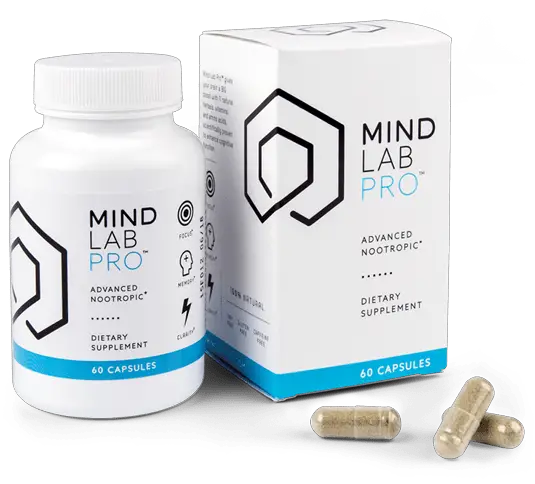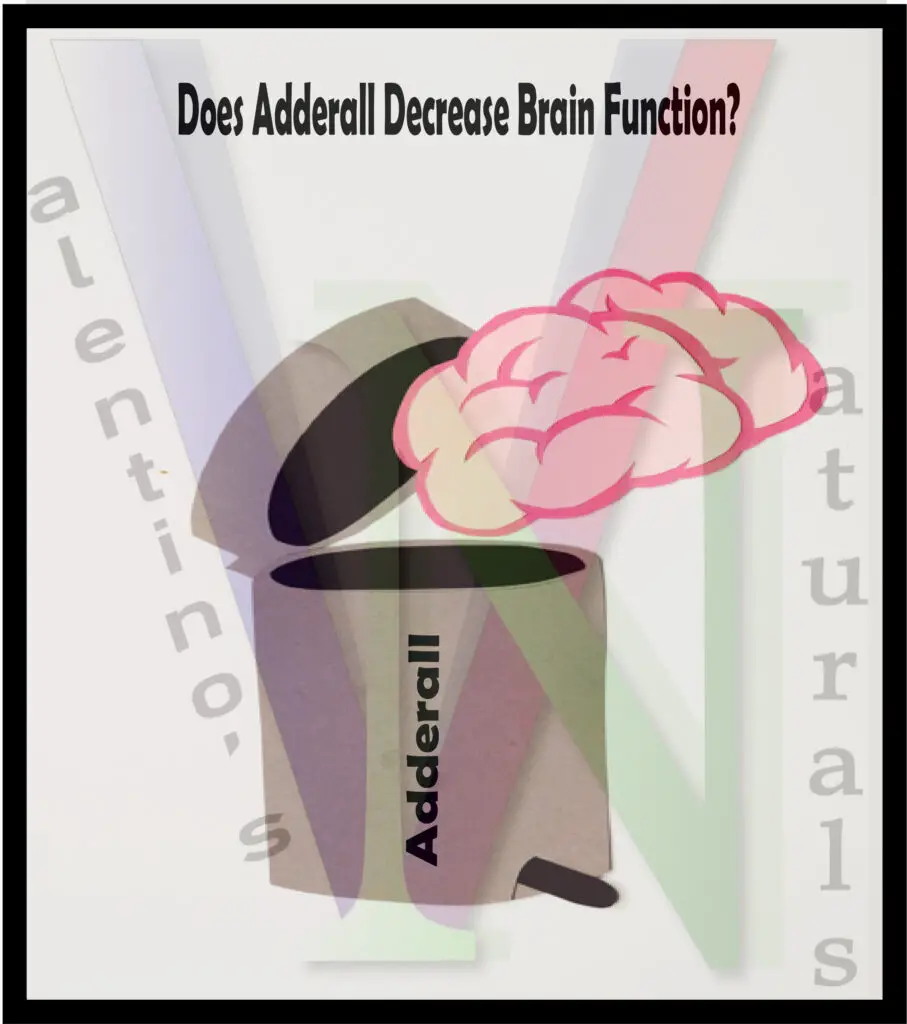Today, I will talk about the dangers and consequences of long term use of Adderall and how to recognize a person who uses this substance.
Are you looking for the best organic nootropic supplement instead in Adderall?
As for me, Mind Lab Pro is the best option available right now.
Mind Lab Pro focuses on cognitive function and general health more than any other nootropics.
Due to the Elements that Mind Lab Pro has, it compresses all the benefits of cognitive function, and even long-term mental well-being.
It Optimizes 6 different brain pathways: Neurotransmitters, brain energy, brain cell protection, cerebral blood flow, neurogenesis, and brainwaves.
What Does Adderall Do to Your Brain Over Time?
The brain is a highly complex communication system made up of billions of nerve cells, also called neurons, which are connected in networks – neural networks.
Neural networks allow the brain and spinal cord, as well as the nervous system, to exchange various signals with each other.
These neural networks control all of our feelings, thoughts and actions.
Adderall has a very negative effect on brain cells.
When Adderall enters the brain, its normal functioning is disrupted – the harm of Adderall does its insidious work and the brain can no longer work as usual.
When you take Adderall, the brain adapts to work with a high content of stimulants, and refusal of them (or interruptions in taking them) causes a feeling of a lack of positive emotions, which is assessed as a deep depression, a sense of danger.
This leads to jumps in blood pressure, disruption of the digestive system, even to hallucinations and a deep mental disorder.
What Are the Long Term Effects of Taking Adderall?
When a person just starts using Adderall, he feels energy and euphoria from the fact that the Adderall helps him cope with problems, overcome depression and difficult life situations.
Subsequently, this plunges the person into psychological dependence on these substances. The dose begins to rise, and along with this, physical dependence develops with withdrawal symptoms.
If earlier Adderall was natural medicine and was prescribed in the treatment of attention deficit hyperactivity disorder (ADHD) and narcolepsy, then over time it has become a popular drug.
Adderall produces adrenaline and dopamine in the body, and also stimulates the central nervous system.
The first thing that Adderall does when it enters the body is that it greatly enhances the synthesis of hormones: norepinephrine, dopamine and serotonin, which ultimately changes the worldview for the better, increases a person’s attention and ability to concentrate.
The central nervous system maximizes its functionality. Further, Adderall enters the liver, where it is neutralized, breaking down into various less toxic substances.
Adderall adversely affects the work of the heart, there is tachycardia, rhythm disturbance, pain in the chest.
The function of the gastrointestinal tract suffers.
A person has nausea, vomiting, there is no desire to eat food. There may be pain in the stomach, loose stools.
The functions of the endocrine system are disturbed. Women may notice soreness in the mammary glands, menstrual irregularities.
The kidneys suffer – the drug has a forcing effect on diuresis.
Adderall is in the blood for up to 10 days. The feeling of a surge of strength lasts up to 24 hours.
If it is administered repeatedly, then the effect of its use accumulates. In a person who has taken Adderall once, it will only be possible to detect it within a few days.
Can Long Term Use of Adderall Permanently Deplete Dopamine?
Adderall and almost all psychoactive substances directly or indirectly target the “reward system” of the brain, increasing the flow of neurotransmitters such as dopamine and serotonin in postsynaptic neurons by 5 to 10 times.
Dopamine-producing neurons are one of the main elements of the brain system responsible for feelings of pleasure.
These neurotransmitters are an important part of the “reward system” of the brain, cause a feeling of pleasure, and influence the processes of motivation and learning.
They are naturally produced in large quantities during perceived positive experiences such as delicious food, pleasant bodily sensations, and the stimulants associated with them.
Neuroscience studies have shown that even memories of positive rewards can increase dopamine levels, so neurotransmitters are used by the brain to evaluate and motivate, reinforcing actions important for survival and procreation.
However, Adderall somehow cheats nature’s “reward system”, allowing the addict to achieve the release of dopamine and get a sense of pleasure by artificial means.
If the patient continues to overstimulate his “reward system”, then gradually the brain adapts to the excessive flow of dopamine, producing less of the neurotransmitter (dopamine) and reducing the number of receptors for it in the “reward system” (i.e., to the gradual depletion of “own” – endogenous – dopamine stores), prompting the addict to increase Adderall dose to obtain the same effect.
The further development of this chemical tolerance can gradually lead to very severe changes in neurons and other brain structures, and can potentially cause serious damage to brain health in the long term.
The Risks of Taking Adderall
Many people (including a surprising number of parents) consider Adderall to be safer than other substances what cause addiction, but risks can include:
- Decreased heart rate and blood pressure
- Narrowed blood vessels
- Guiding pain
- Doubts
- Dangerously high body temperature
- Suicidal thoughts
- Paranoia
- Seizures
- Heart failure
Regular abuse of Adderall or other prescription stimulants can quickly lead to dependence and addiction, and users may experience stimulant withdrawal symptoms such as severe cravings, depression, and other unpleasant side effects when the medication is stopped.

Symptoms of How to Recognize a Person Who Uses Adderall?
Visible Body Changes
- Pale skin
- Dilated or constricted pupils
- Reddened or cloudy eyes
- Slow speech
- Poor motor coordination
Behavioral features
- Indifference to everything that happens nearby
- Difficulty concentrating, memory impairment
- Inappropriate reaction to criticism
- Frequent and unexpected mood changes
What else is Adderall addiction?
- Sleep disturbance
- Muscular and joint pain
- Unstable blood pressure
- Dry mouth
- Decreased sexual potency
- Menstrual irregularity
- Exhaustion
FAQ
How is the Adderall Addiction Formed?
It should be noted that the mechanism of formation of Adderall addiction is usually divided into two groups – biological and psychological.
“Biologists” are trying to explain that this addiction is associated with a change in metabolism, and “psychologists” say that Adderall addiction is caused by disturbances in the normal development of the personality.
But this does not mean that one or the other mechanism operates. It is safe to say that these are two parallel processes that take place simultaneously. But in some cases, biological mechanisms predominate, while in others, psychological ones.
Observations have shown that at different stages of the formation of Adderall dependence, some mechanisms will play a particularly important role, for example, psychological mechanisms – at the initial stages of the disease, and biological mechanisms – at the last stage of the disease, addiction.
What Will Happen if You Take Adderall?
Adderall has a complex effect on the organs and systems of the body.
Almost immediately after use, Adderall causes a number of physical reactions to occur. The work of all calves of the brain is activated – this leads to an imaginary effect of euphoria and an improvement in mood.
An important feature of the action of Adderall is the absence of hunger.
What’s the Danger of Adderall?
Adderall is an amphetamine-based psychostimulant.
Like all stimulants, there is a huge minus – addiction, dependence, the production of one’s own dopamine decreases, and over time, a larger dose will be required of what is called Adderall Addiction.




